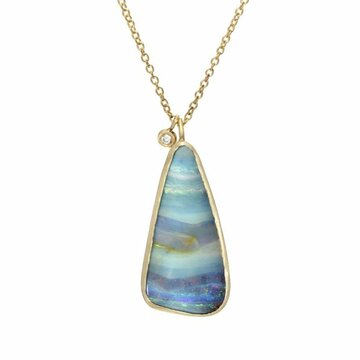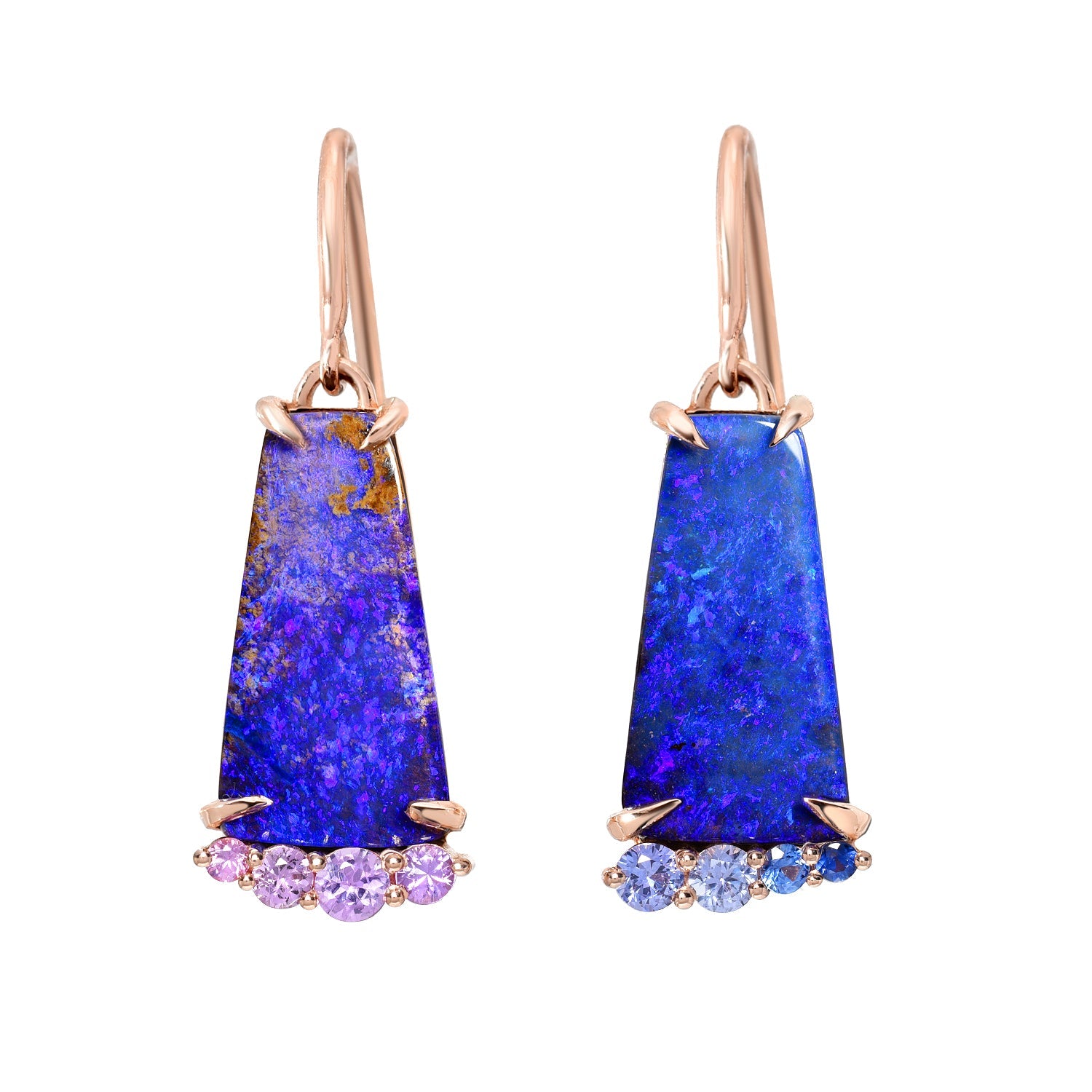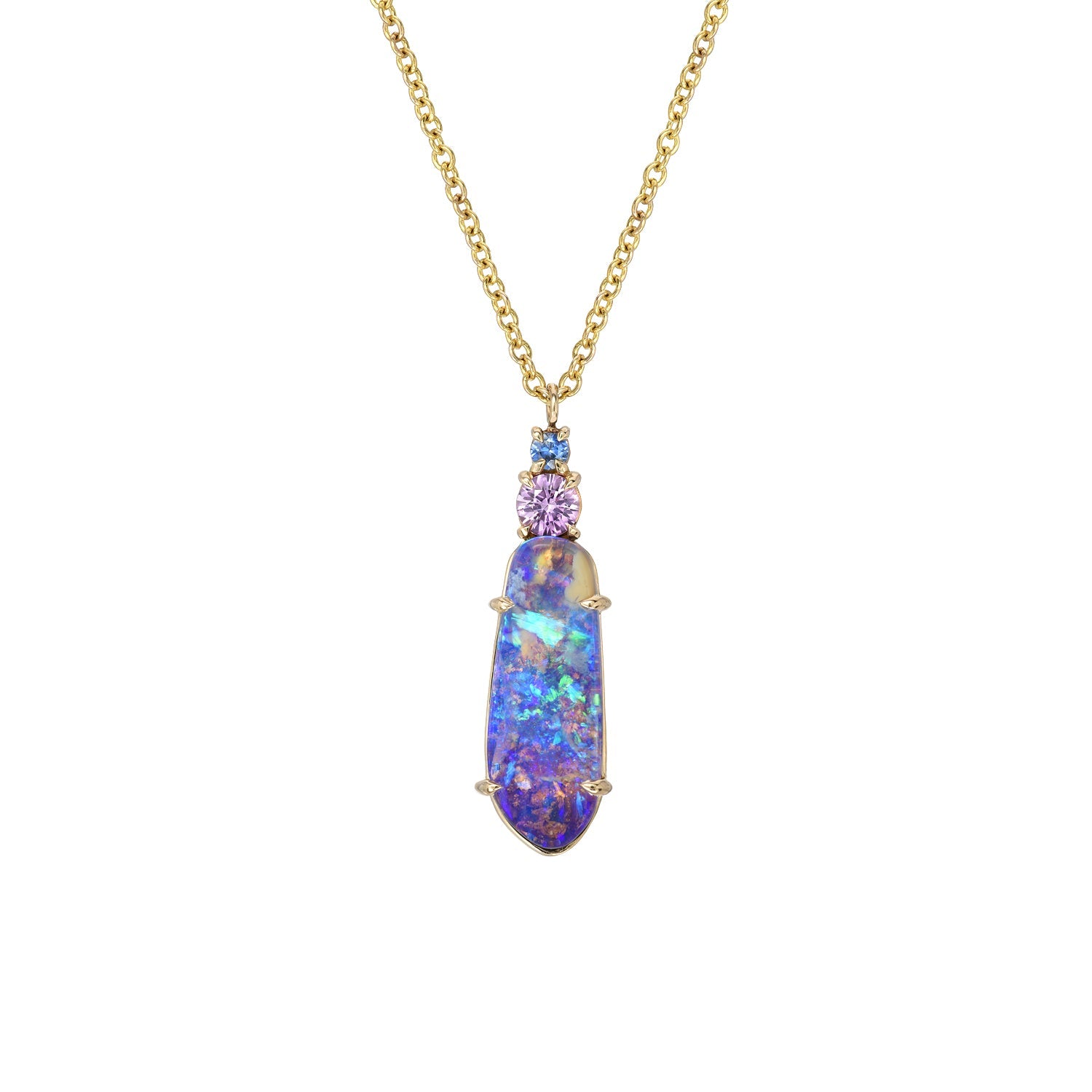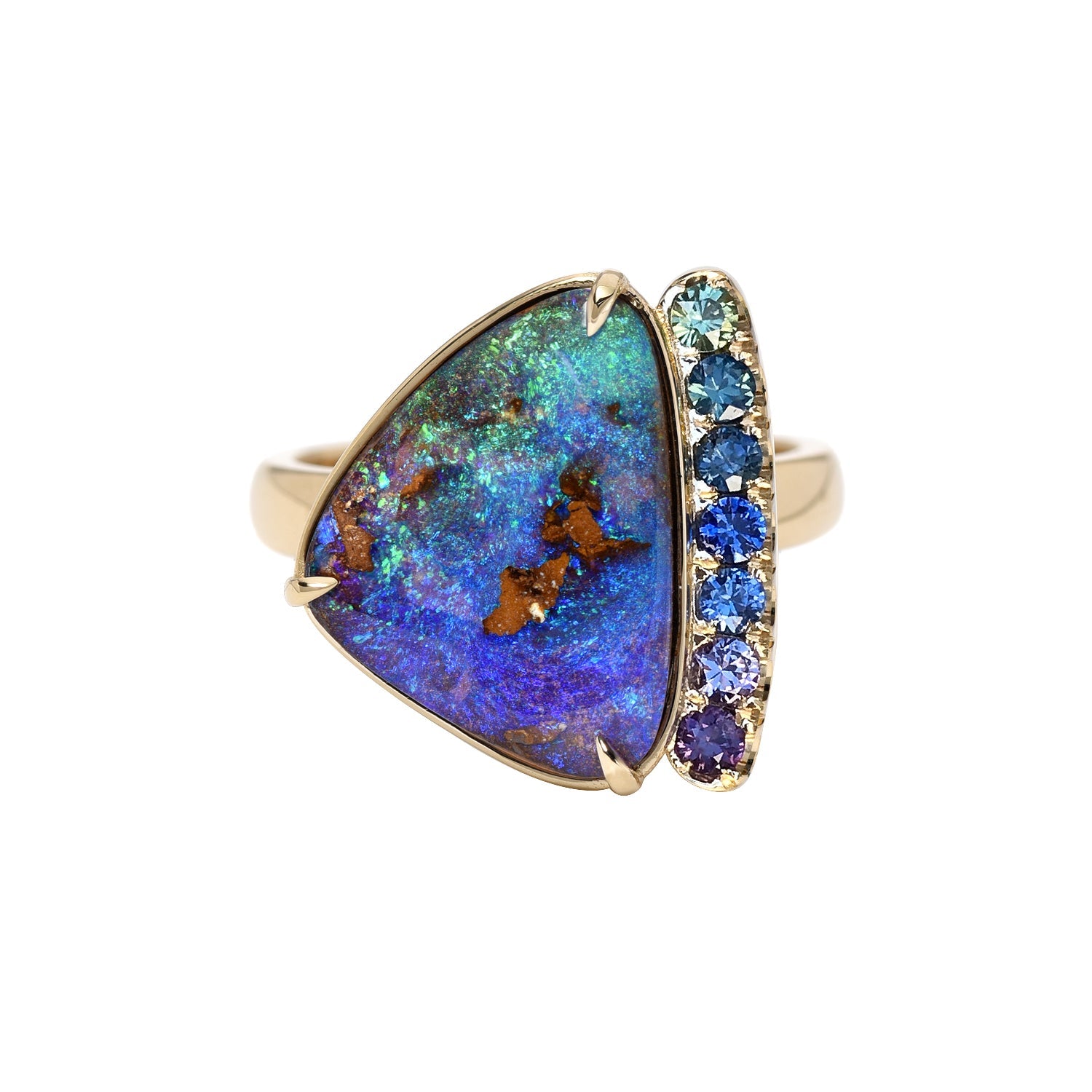Unless you’re in the jewelry industry or are an avid Opal lover, you may not be aware that there are multiple types of Opals in existence. Not only that, but within those generalized groupings - three, give or take a controversial one or two - we’ll find subsets — in other words, subtypes that branch off. When shopping for Opal jewelry, it’s important to know what type of Opal you’re investing in. It can be a complex geological world, and we’re here to help. In today’s article, we’re going to discuss the different classes of Opals and, also, some of the types of Opals you might encounter. So, put on your miner’s hat and get ready for a rocking good show!
Types of Opals — The main classes
There are generally speaking 3 main broad classes of Opals:
- Common Opal
- Precious Opal
- Synthetic Opal
Each of them has a different composition and is used for different purposes within different industries.
Common Opal
This type of Opal is known for its abundance and ultimately its often milky hues that can form in a range of (usually) muted colors. It is the most common type of Opal, and is found around the globe in many of the same geological environments that precious Opal is found. This is the type of Opal you might stumble upon during a hike, or on a fishing trip along the coast. They are most often found near geysers (sometimes referred to as ‘Geyser Opals’ or ‘Spencer Opals’ - both precious and common are produced here), hot springs, and places that once had or continue to have a lot of geological activity.
While these types of Opals are sometimes utilized in less expensive jewelry, they are primarily used for show-and-tell, as paperweights, or as trinkets sold at a nominal fee in a Science Museum gift shops.
Precious Opals
Meanwhile, precious Opals, those used primarily for fine jewelry, show a variable interplay of internal colors and patterns. Visible light diffracts as it passes through the stone, and the Opal behaves like a prism, splitting the white light into a kaleidoscope of colors and passing them back through its surface delivering an optical treat. This play of colors is what gives the Opal its “precious” quality and is why they are so coveted by so many.
It’s important to note that, due to their composition - predominantly silica and water-based - most Opals are incredibly sensitive gemstones. This makes them delicate stones to work with. This is why jewelry application of precious Opal can be a bit limited based on the characteristics of the specific stone. Not only that but they also have a predisposition towards scratches and are affected by extreme temperatures. It takes a trained eye to understand how to best design around an Opal - to properly handle the gem and to take that specific stone’s features into consideration to create an optimal piece of unique Opal jewelry. Proper understanding of the gem can result in both a lasting and stunning piece of Australian Opal jewelry.
Synthetic Opals
The discovery of its atomic nature and the ordered spherical structure of precious Opals in 1974 by Pierre Gilson, lead to the development of synthetic Opals. These types of Opals have been crafted in a laboratory, thus the term “lab-created,” and are sold commercially not only to jewelers, but also to the cosmetic and tech industries — due to their unique properties.
Under magnification, some show a “lizard skin” or “chicken wire” pattern and generally will not fluoresce under ultraviolet light. (Bear in mind, this test isn’t definitive, as not all natural Opals will flouresce under UV light.) These types of Opals are also highly porous and have a lower density than their natural gemstone cousins. Nevertheless, what makes them extremely important, and why the tech community is investing heavily in their production and betterment, is on account of their photonics’s power — they are proving to be exceptional for light harvesting applications.
Types of Opals based on their Characteristics
Within these generalized and extremely broad branches - common, precious and synthetic - we find subdivisions of Opals. How they are classified and arranged? Or better yet, what are some of the visible characteristics used to classify them - obvious to the naked eye - without the need to employ advanced equipment or specialized microscopes.
By their Body Tone
Body tone refers to the background colors of the Opal. Opals are arranged and classified for sale based on their colors. The most valuable color is black, and those come mainly from the Lightning Ridge mining community of Australia. Black Opals are often high-quality stones. They are also extremely rare and the dark body tone - when compared to white opals - helps dramatize their play of colors; there’s more contrast between their dark background and the different colorful patterns that flash upon it.
By their background colors, we can distinguish the following Opals from one another along a sliding body tone scale:
- Black Opals
- White Opals
By their Body Colors - "Play of Color"
By body colors, we are talking about the rainbow play of tinge and tinctures that create a pattern on the surface of the Opal. The different colors shift and morph and diffract light within the Opal's mirror-like surface. Precious Opals are composed of dozens of different colors, with different degrees of those same colors — for example, within the same Opal you can have a vibrant vermilion, with a dull bloodstained crimson, and a flaming ruby blush. To the naked eye, it's just red, but to a trained eye it’s a spectrum of hues of that color. Aside from that color, you might also have other tints like orange, yellow, green, indigo, violet, blue, etc.
These Opals are classified by their “dominant color” — this means by the color that’s more predominantly on display.
By their Country of Origin
Most Opals, at least 95% of them, come from Australia. This country has a rich history tied to the mining of Opals and a rather zealously supervised mining industry. This means that they not only produce the greatest volume of high quality Opals on the planet but that they also have multiple firewalls in place to mitigate cut-throat tactics that might put a buyer at risk during the sale of an Opal — infrastructure the remaining 5% doesn’t have in place.
Opals are mined in:
- Mexico
- Brazil
- Ethiopia
- Australia
- Nevada
- Turkey
- Canada
- Slovakia
- Indonesia
And in 2008, NASA announced that it had discovered an Opal deposit on Mars; so you never know what the future might hold.
By their Composition
Boulder Opals
This is a type of precious Opal that has part of the host rock, generally, ironstone, fused to its back. This is the most common type of Opal used in jewelry making. It’s not uncommon for Boulder Opal Jewelry to be left open in the back so they consumer can see they are receiving a natural Opal pendant and not an Opal doublet.
Fire Opals

Generally found in the state of Queretaro, Mexico, these Opals are typically transparent or translucent shades of yellow, orange or red. Many Mexican Fire Opals lack the play of color found in Australian Opals - despite this, with enough translucence and a deep enough color base, a Fire Opal can still be considered precious.
Matrix Opals
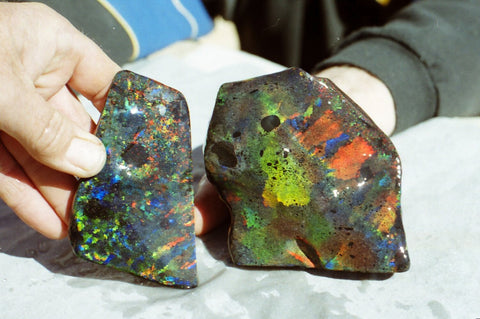
These are Opals that are intimately diffused throughout the host rock they formed in. Think of them as a kind of Opal cement, sealing together all the tiny gaps and air holes of the rock. Left as formed, they’re relatively unimpressive, but when treated with special dyes, smoke, or sugar solution, they can become truly beautiful specimens. The Andamooka area of Australia is particularly well known for its production of Matrix Opal.
Hyalite Opals

Also known as Muller’s Glass, these types of Opals have a glassy appearance, are notably rare and range from near colorless to a neon-green — they look glassy in appearance, and are said to have negligible amounts of radioactive material within.
Peruvian Opals
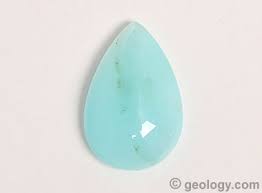
A semi opaque type of Opal, generally a beautiful pale pink or turquoise blue hue, that’s found in the Andes Mountains of Peru. While they can display a form of iridescence at times, they lack a true play of color.
How are Opals Classified?
When classifying an Opal there are a host of characteristics to take into account. While there is some subjectivity that comes into play assessing these dynamic, one of a kind gemstones, there are some sound, industry-accepted benchmarks to consider:
- Type of Opal - common or precious
- Body Tone - background color of the Opal
- Transparency - degree of translucence of the stone, also known as ‘diaphaneity’
- Play of Color - the spectrum of colors present in an Opal and their resulting interplay. The inclusion of more rare hues (like red) can increase an Opal’s value
- Brightness - vibrance of the colors present
- Pattern - a recognizable motif within the colors of the Opal
- Shape - the perimeter shape and overall cut of the Opal stone
Though we love all types of Opals here at NIXIN Jewelry, we are especially fond of Australian Opals. We invite you to explore our creations, inspired by each unique stone and crafted with love. Your piece is waiting ~ come find your One of A Kind.


